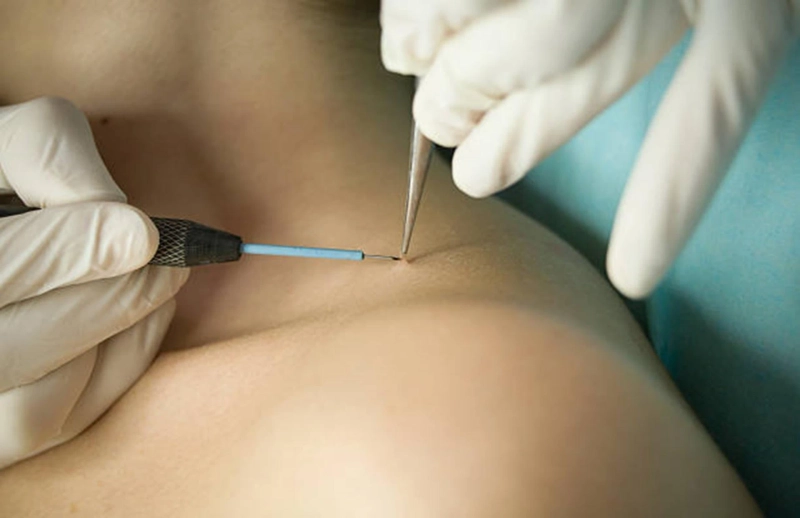Warts are common skin growths caused by the human papillomavirus (HPV), often appearing on hands, feet, or other areas. Many individuals seek effective Warts Removal Treatment in Abu Dhabi to eliminate these growths and restore skin clarity. Understanding the healing timeline after wart removal is essential for setting realistic expectations and ensuring proper post-treatment care. The speed of healing varies depending on the type of treatment, the size and location of the wart, and individual skin responses. Typically, most patients notice significant improvements within a few weeks, but complete healing can take longer, especially for stubborn or larger warts.
Factors Influencing Healing Time After Warts Removal
Type of Treatment and Its Impact on Healing
Different wart removal methods influence healing duration. Common treatments include cryotherapy, laser therapy, electrosurgery, and topical medications. Each technique causes a controlled injury to the wart tissue, prompting the body's natural healing process. For instance, cryotherapy often results in blister formation, which usually heals within one to two weeks. Laser treatments may require a longer recovery period, especially if multiple sessions are needed. The choice of treatment is tailored to the wart's size, location, and patient preference, impacting overall healing time.
Wart Size and Location
Size plays a crucial role in healing speed. Smaller warts tend to heal faster as less tissue is affected. Conversely, larger or deeper warts may require multiple treatment sessions and extended healing periods. Location also matters; wart treatment on the hands or feet might take longer to heal due to increased movement and exposure to external factors. Areas with thicker skin or less blood circulation may experience slower recovery, influencing overall healing time.
Individual Skin Response
Every individual’s skin reacts differently to wart removal procedures. Factors such as age, immune response, skin type, and overall health can accelerate or delay healing. Younger individuals with robust immune systems often recover more quickly, while those with compromised immune responses may experience longer healing periods. Proper skin care and following post-treatment instructions are essential to promote faster healing and minimize complications.
Typical Healing Timeline After Warts Removal
Immediate Post-Treatment Phase (First Week)
In the initial days following wart removal, the treated area may be red, swollen, or tender. Depending on the procedure, a blister or scab may form, serving as a natural protective barrier. During this phase, patients are advised to keep the area clean and dry, avoid picking at scabs, and follow specific wound care instructions. This initial period is crucial for preventing infection and supporting the body's healing response.
Short-Term Healing (2 to 4 Weeks)
Within two to four weeks, most patients observe noticeable reduction in wart size or complete disappearance. The scab or blister typically falls off, revealing new, healthy skin underneath. Mild redness or pigmentation may persist temporarily but usually diminishes over time. During this stage, gentle skin moisturizing and sun protection help optimize healing and minimize scarring.
Long-Term Recovery (1 Month and Beyond)
Complete healing, including the resolution of any residual discoloration or textural changes, generally occurs within one to three months. In some cases, small residual scars or pigmentation may remain but tend to fade with time. For stubborn or recurrent warts, additional treatments might be necessary, and a longer healing period should be anticipated. Continued skin care and monitoring are essential to ensure optimal aesthetic and functional outcomes.
Post-Treatment Care Tips for Faster Healing
Proper Wound Care
Maintaining cleanliness is vital to prevent infection. Patients should gently wash the area with mild soap and water, then pat dry. Applying prescribed ointments or moisturizers promotes healing and keeps the skin supple. Avoiding trauma or friction to the site minimizes delays in recovery.
Protecting the Treated Area
Sun exposure can cause pigmentation changes, so applying sunscreen or covering the area is recommended. Wearing comfortable, breathable clothing helps reduce irritation, especially for wart removal on the hands or feet.
Avoiding Irritants and Picking
Refraining from scratching or picking at the wound prevents scars and secondary infections. Using protective coverings or bandages as advised supports a clean healing environment.
Follow-Up and Additional Treatments
Scheduling follow-up appointments ensures the healing process progresses smoothly. If warts recur or do not respond fully, additional or alternative therapies might be suggested to achieve optimal results.
When Will the Wart Be Fully Healed?
Complete Skin Restoration
While visible signs of wart removal can resolve within weeks, full skin recovery, including the disappearance of any residual discoloration or scars, may take a few months. Patience and diligent post-treatment care are key to achieving the best aesthetic outcome.
Factors Affecting Final Healing
Individual healing capacity, wart size, and the treatment method influence the timeline for complete skin restoration. Proper wound care, sun protection, and avoiding trauma support optimal healing and minimize long-term skin changes.
Frequently Asked Questions (FAQs)
How quickly can I expect the wart to be completely gone after treatment?
Most patients see significant improvement within 2 to 4 weeks, with full healing and skin restoration occurring over the next few months, depending on individual factors.
Is it normal to experience redness or scabbing after wart removal?
Yes, these are common post-treatment reactions. Keeping the area clean and following care instructions help facilitate healing and reduce discomfort.
Can I resume normal activities immediately after treatment?
Generally, patients are advised to avoid activities that may traumatize the treated area during the initial healing phase, but most can return to daily routines promptly with proper care.
How can I ensure the best healing outcome?
Adhering to post-treatment care instructions, protecting the area from sun exposure, avoiding picking at scabs, and attending follow-up appointments contribute significantly to faster and better healing.



